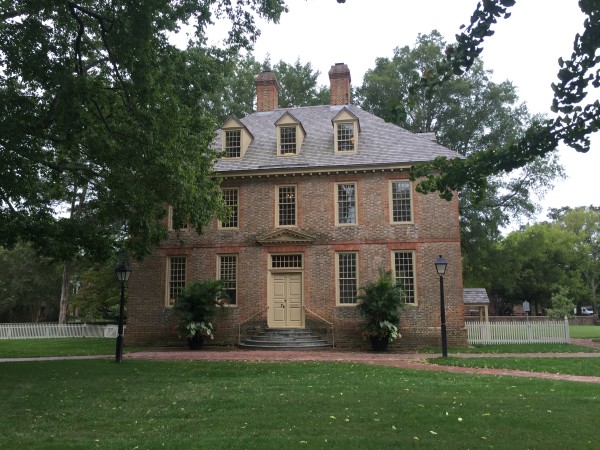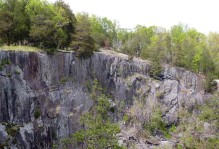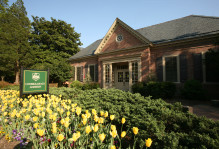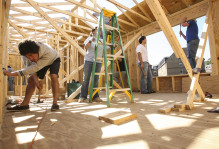The Brafferton Indian School at William & Mary
As we stand on the cusp of yet another Homecoming & we look forward to the bright future ahead of this illustrious institution, as a steward of the Historic Campus, I cannot help but reflect on this university’s history & the people who came before us. Most notably, I find myself reflecting on the American Indian students who lived & studied here in the colonial Indian education program. If you are visiting campus during Homecoming, make sure you take a break from the festivities in order to see the excellent Brafferton Indian School exhibit at the Muscarelle Museum of Art. It is well worth the visit & will further your understanding of William & Mary.
The American Indian education program was part of this college from the beginning of its history. Our first president, James Blair, lined up the funding for this program from the estate of wealthy scientist Sir Robert Boyle while he was in England to meet with King William III & Queen Mary II. The mission of the Indian school was delineated in the Royal Charter of William & Mary.
The first students in this program studied in the College building (known as the Sir Christopher Wren Building in modern times), sharing the Grammar School Classroom in the main center section of the building with gentry grammar school students until the Brafferton was built to house the Indian students in 1723. The Indian students boarded with families living near campus while they studied in the College building.
Some of the earliest students were not there by their choice. In some cases, their families & communities did not know where they ended up. Some of the earliest Indian students were kidnapped by traders & brought to William & Mary’s Indian education program. Some Indian students died at William & Mary after being exposed to new European diseases. Doctors were called in when Indian students fell ill, but they were not always able to help. The students who died here are undoubtedly buried somewhere on or near our campus. We don’t know where this burial area could be located yet. Our history often leads us to more questions than answers.
Eventually some Indian communities saw a benefit to this education program & used it to their advantage. Some of the Indian students who studied at William & Mary became translators for their communities, sometimes assisting their communities in working with English leaders but often working against the English. John Nettles of the Catawba (in present-day North Carolina) became a translator for the Catawba after he studied at the Brafferton Indian School. The Queen of the Pamunkey (west of Williamsburg in Virginia) sent her son to study at William & Mary so he would have this knowledge as the future leader of his community. A silver frontlet that belonged to an earlier Queen of the Pamunkey is currently on display at the Muscarelle.
While some of William & Mary’s history is well-known and displayed proudly about campus, this is the first time the university has exhibited the comprehensive history of its Indian school. The exhibit also examines the legacy of the Brafferton and its impact upon today with modern artwork from native communities with ties to William & Mary’s Indian school. Make sure the Brafferton exhibit at the Muscarelle is on your list of must-do Homecoming activities.





No comments.
Comments are currently closed. Comments are closed on all posts older than one year, and for those in our archive.